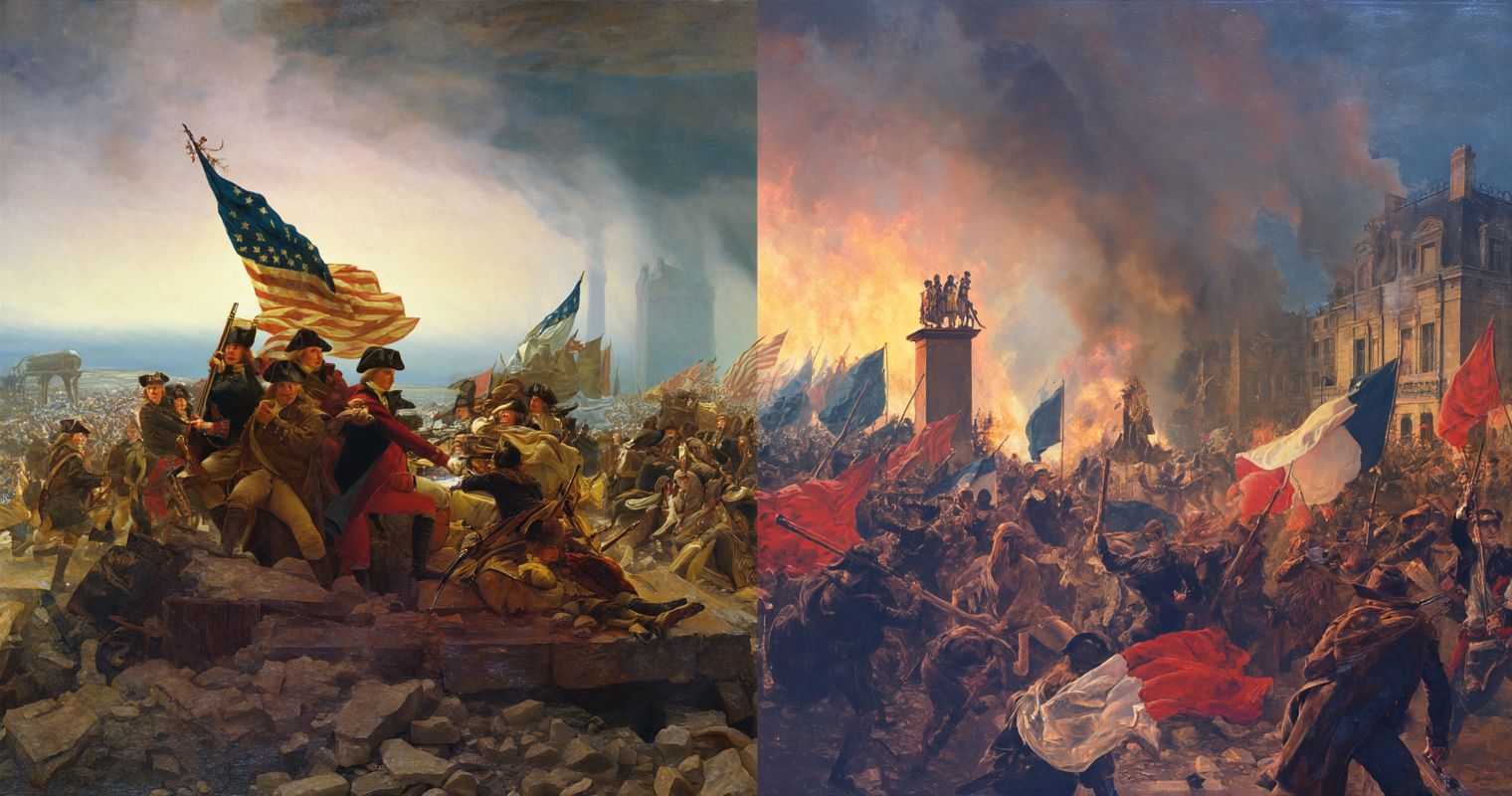Hey there, history nerds and lovers of all things old-and-bold! Ever wondered why everyone calls the American Revolution a “half revolution”? It’s like throwing a wild party but keeping the furniture and the old rules in place. Meanwhile, over in France, they went full-on chaos mode—heads rolling, the monarchy’s head chopped off, social classes overturned. So, what gives? Let’s unpack this with a banana-peel of historical fun, courtesy of BananaKing.
Help out Historygonebananas by checking out today’s sponsor:
Trusted by millions. Actually enjoyed by them too.
Most business news feels like homework. Morning Brew feels like a cheat sheet. Quick hits on business, tech, and finance—sharp enough to make sense, snappy enough to make you smile.
Try the newsletter for free and see why it’s the go-to for over 4 million professionals every morning.
What Made the American Revolution a “Half Revolution”
Americans were shouting “Freedom!” from the rooftops, but they didn’t go full upheaval. They fought off the British, yes—but most kept their social hierarchies, landowning elites, and even some colonial traditions. It was mostly about swapping kings for local bosses, not smashing the entire system.
A Fragile New Nation
Post-war, the United States was kind of like an unsteady toddler trying to walk in high heels. The Articles of Confederation? A shaky, confusing document that gave all the power to the states and left Congress as weak as a kitten. That’s why, after all the fireworks, Americans still needed a new constitution—another patch on the half-done revolution.
The French Revolution’s Full-On Shakeup
Ripping Up the Rulebook
Across the ocean, the French went full dramatic, tearing down centuries-old social orders. Nobles, clergy, even the monarchy—gone, gone, gone! It was bloody, chaotic, and deeply radical. They wanted equality… or something like it, and they wanted it NOW.
What Historians and History Geeks Can Learn
Revolutions are complicated beasts: Sometimes they just replace a bad ruler, not the whole society.
Ideas vs Reality: The American Revolution preached liberty but still allowed slavery, revealing how ideals and reality sometimes clash.
Government fails: The U.S. needed a new Constitution because the first attempt (Articles) was such a half-hearted fix.
Drama matters: The French revolution's over-the-top violence reminds us how different paths of rebellion shape nations — sometimes painfully.
Why This Matters to You
Understanding this “half” thing makes you look super clever at trivia nights. Plus, it helps you see history not just as a story of kings and queens but as messy, complicated, human stuff. Who knew revolutions could be so nuanced?
Help HistoryGoneBananas Keep Digging Up the Nutty Stories
Love goofy, insightful history? Want more stories that make you laugh and learn? Subscribe to the HistoryGoneBananas newsletter! Follow us on socials for daily doses of history hilarity, crazy facts, and banana-themed brain food.
Ready to dive deeper? Remember, history isn’t just a story — it’s a banana peel waiting to trip up the unprepared. Stay curious, stay bananas!


